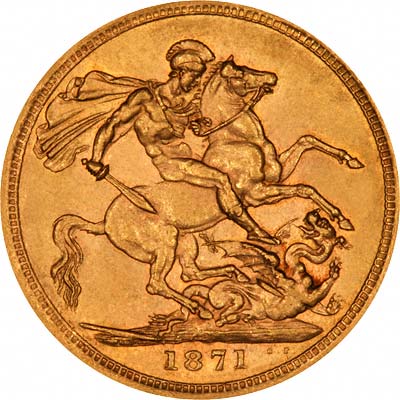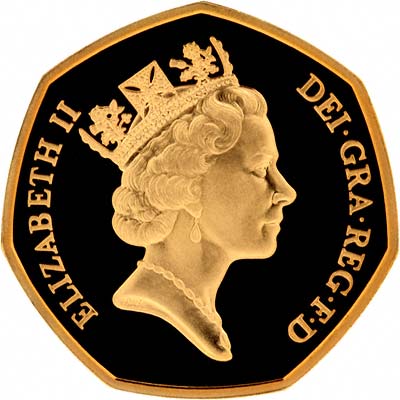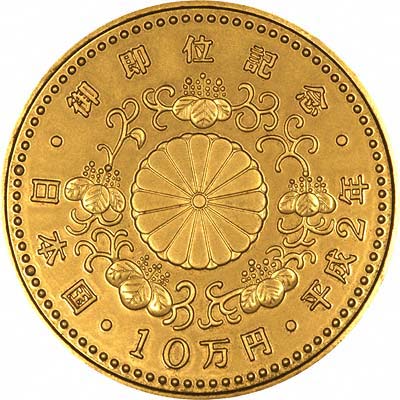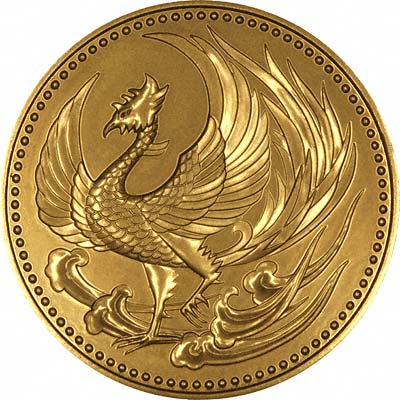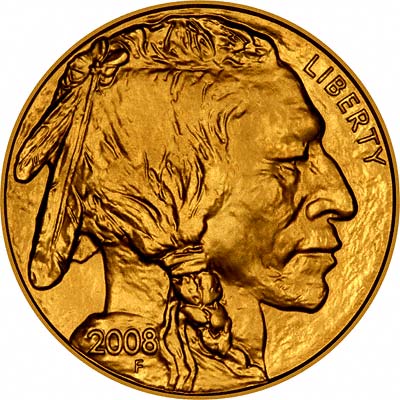Make Our Dream Come True
DinarGoldCoin Link......
Atasi Penurunan Nilai Uang dengan Investasi dalam DINAR
Banyak manfaat lain dari kepemilikan emas secara fisik
1. Konsistensi Dinar dalam Daya Beli
Nilai emas mengikuti pergerakan nilai komoditi dunia
2. Tidak ada counterparty risk dalam Dinar
Anda memegang tangible asset yang tidak tergantung pada janji orang lain
3. Tidak tergantung pada Keputusan Pemerintah.
Tidak perlu cemas dg kenaikan/penurunan suku bunga BI
4. Dinar merupakan Asset di luar system Perbankan
Terbebas dari pusaran krisis perbankan yang bisa muncul
kapan saja dan dimana saja
Investasi Emas dalam Dinar lebih flexible dibanding investasi emas dalam bentuk emas batang atau perhiasan
1. Dinar terbuat dari emas 22 karat seberat 4.25 g, yang terjamin keaslian dan keakuratannya.
Produk PP Logam Mulia, PT AnekaTambang Tbk.
Diuji & disertifikasi sesuai ISO Guide 17025 oleh Komite
Akreditasi Nasional (KAN) dan London Bullion Market
Assosiation (LBMA)
2. Unit satuan relatif kecil, tidak perlu modal besar untuk mulai berinvestasi emas
3. Terjamin keaslian & keakuratannya
4. Nilai dinar mengikuti perkembangan emas dunia dan transparan
5. Mudah untuk diperjual belikan

L A Y A N A N PEMBELIAN
Setiap hari Senin s/d Jum'at
Pukul 08.00 - 16.00
Kecuali Hari Libur
Harga sesuai dengan pergerakan harga Dinar di Gerai Dinar
http://www.geraidinar.com


Fluktuasi Nilai Tukar Dinar dalam 3 Bulan
Perubahan NilaiTukar Dinar Rata-Rata dari Tahun ke Tahun

Grafik Nilai Tukar Dinar (10 Tahun)
Dinar Dalam Pecahan Kecil, Mengapa Tidak…?
| Written by Muhaimin Iqbal |
| Tuesday, 13 January 2009 19:23 |
 Sejak saya memperkenalkan Dinar pada hari pertama, orang sudah menanyakan ada tidaknya Dinar dalam pecahan kecil ini. Soalnya membeli Dinar 1 keping saja harganya sekarang sudah sekitar 1.3 juta, tentu tidak semua orang bisa memilikinya. Sebenarnya Dinar dalam satuan kecil seperti ¼ Dinar; ½ Dinar dlsb. bukan tidak mungkin diproduksi, hanya saja biaya produksinya menjadi terlalu mahal sehingga tidak praktis memproduksi koin Dinar kecil ini. Dengan M-Dinar masalah klasik ini dengan mudah teratasi. Peminat-peminat Dinar dapat mulai memiliki account di M-Dinar walaupun dananya baru cukup untuk membeli ¼ Dinar sekalipun. Selengkapnya...... |
G-20 London, Sejarah Mencatat

Simon Saragih
KOMPAS.com - Ketika para pemimpin dunia bertemu, di mana saja, terutama di negara demokrasi sejati, hampir selalu muncul aksi-aksi demonstrasi. Tidak heran jika pertemuan selalu dilakukan di lokasi yang tidak dijangkau umum. Indonesia pun pernah menjadi sasaran demonstrasi, terutama di bawah kepemimpinan almarhum Soeharto pada era Orde Baru, yang sudah tidak lagi baru.
Dekade 1990-an, sasaran lain adalah China, yang sarat dengan pelanggaran hak asasi manusia dan kekejaman Tentara Rakyat China, yang dianggap tidak cinta rakyatnya. Sekeras apa pun China meredam rakyatnya, jeritan pilu warga tetap terdengar. Read More.........
5 Ways To Profit As Gold Soars To $1,500 In 2009
The recent slump in gold prices has puzzled many investors who considered the yellow metal a safe haven. But Mike Caggeso says the inflationary impact of the government’s $700 billion bailout program could send gold soaring towards $1,500 an ounce by the end of 2009. He recommends five ways to play this coming gold bull run.
This from Money Morning:
Gold hit two historic milestones in 2008.
First, in early March, the “yellow metal” hit its all-time high of $1,030 an ounce.
Just months later, the price of gold for December delivery had plummeted to $681 an ounce, a 21-month low and 33.9% drop from its record high.
Most gold bugs were equal parts puzzled and broken-hearted. The world’s stock markets tanked, as did some of its biggest economies. In such an environment, they thought, gold should have risen. After all, gold is widely considered to be a safe-haven investment when everything else is spiraling south.
However, Money Morning Contributing Editor Martin Hutchinson – an investment banker with more than 25 years’ experience on Wall Street and a leading expert on the international financial markets – understood perfectly what other investors did not.
“Gold is not a safe haven against recession,” said Hutchinson. “It’s a safe haven against inflation.”
In the past year, commodities prices skyrocketed – across the board. That was especially true of oil, which hit a record high $147 a barrel. Corn, wheat, and soybeans all hit record highs, as well.
That price escalation tightened household and corporate budgets, and was a primary reason why the U.S. economy posted a gross-domestic product (GDP) decline of 0.3%. With that negative growth, the third quarter was the beginning of what many experts believe will be the nation’s first recession since 2001.
However, the inflation epidemic has waned significantly, as global demand for raw materials has plummeted.
Price for such staple foods as corn, soybeans and wheat have all come down from their record highs – in near-lockstep fashion.
Corn futures are down nearly 50% from their summer high of $8 per bushel. The same is true of soybeans and wheat, with each having lost roughly half their value. In fact, wheat hit a 16-month low in mid-October.
As most of us noticed, gas prices have fallen 48% from their July 17 high of $4.114 a gallon.
And not coincidentally, gold has fallen 22% in that same time frame.
However, this report examines the pending commodities rebound – a projected slow-and-steady increase in commodity prices that will reverse the breakneck plunge below fair value that commodities have experienced for much of this year.
Our objective now: To chart the expected path of gold prices in the New Year.
This report also reveals another wild card inflationary indicator that Hutchinson believes will carry gold prices to $1,500 an ounce by the end of 2009.
Two Catalysts For Gold’s Climb
The U.S. Department of Agriculture’s Oct. 10 Crop Production Report said acreage for a handful of staple food commodities has shrunk:
- Corn acreage fell 1.2%.
- Soybean acreage dropped 1.4%.
- Canola acreage dropped 1.9%.
- Sunflower acreage shrank 0.8%.
- And acreage of dry edible beans fell 0.7%.
That naturally translates to higher prices because it squeezes the supply of the particular commodity. And it does so at a time when demand continues to escalate from populations in China, India and Latin America. And higher prices equal inflation.
But Hutchinson – who correctly predicted this last run-up in gold prices – says there’s another catalyst that’s right now inherent in the U.S. economy that could help vault gold prices to $1,500 an ounce by the end of 2009. And it has to do with the much-ballyhooed $700 billion rescue plan.
The philosophy behind the rescue plan is elegantly simple: By providing a portion of the $700 billion to foundering U.S banks, the Treasury Department believed it could provide banks with badly needed capital, and get them to start lending money once again – jump-starting the economy in the process.
Since September 2007, U.S. Federal Reserve policymakers have cut the benchmark Federal Funds target rate nine times – from 5.25% down to the current 1.0% rate – to increase bank-to-bank lending and bank-to-consumer lending.
“The government is pumping money in so many banks, and that money has to come out somewhere,” Hutchinson said.
Right now, banks aren’t boosting lending. Instead, they are using the cash to finance buyouts of other banks. Even so, that money will “come out” into the economy in the form of higher stock prices for banks. That will make consumer/investors wealthier, and could make them more confidence in the economy. If they’re more confident, they will spend. As that happens, food prices should begin ticking upward, adding another set of thrusters to gold prices.
“Everybody thinks that because we’re having a horrible recession, we’re not to going have inflation. I think that’s probably wrong,” Hutchinson said. “I think gold has quite good hidden-store value.”
As gold prices increase, count on more investors leaving the sidelines to invest, too, causing the surge in gold prices to accelerate and steepen.
“As gold goes up, it gets more popular and investors start piling into it,” Hutchinson said.
Bom Waktu US$ 3 Miliar di Perbankan Kita

JAKARTA. Ini adalah bom waktu untuk perbankan Indonesia. Menurut perhitungan Bank Indonesia (BI), eksposur dana nasabah dalam produk terstruktur perbankan mencapai US$ 3 miliar. Dana itu masuk ke belasan bank yang menjadi agen.
BI sudah menerima laporan dari bank yang menjual produk itu. "Lebih dari 10 bank yang sudah melapor," kata Deputi Gubernur BI Siti Chalimah Fadjrijah, kemarin (22/12).
Dana nasabah tersebut kondisinya bermacam-macam. Ada yang belum jatuh tempo, ada pula yang macet dan sedang direstrukturisasi. "Tapi, saya belum tahun kondisi terakhirnya," tuturnya.
Produk terstruktur merupakan kombinasi berbagai instrumen derivatif valas untuk tujuan mendapatkan tambahan laba. BI menilai produk ini bisa mendorong transaksi valas untuk tujuan spekulatif.
Tapi, kata Siti, BI tak melarang semua produk terstruktur. Ada produk terstruktur yang memang bertujuan untuk lindung nilai atau hedging nilai kurs bagi para eksportir dan importir. BI hanya melarang produk derivatif valas yang tidak memiliki underlying transaction dan bersifat spekulatif.
Untuk mencegah persoalan ini di masa depan, Deputi Gubernur BI Muliaman D Hadad menambahi, BI akan segera mengeluarkan acuan tentang fungsi keagenan perbankan. Terutama dalam menjual produk-produk derivatif dan produk offshore. "Tak sembarang bank bisa mengageni produk yang tidak jelas," katanya.
Tapi, ibaratnya nasi sudah menjadi bubur. Banyak dana nasabah yang amblas di produk ini karena gejolak pasar keuangan global belakangan ini. Masalahnya, mampukah para nasabah membayar kewajibannya? Sebab rata-rata transaksi ini memakai fasilitas margin atau ada utang dari bank.
Jika nasabah tak mampu membayar, maka perbankan Indonesia bisa terekspos pada kerugian hingga US$ 3 miliar.
Pengikut
Mengenai Saya

- BOGci Dinar
- Stability Gold and silver are the most stable currency the world has ever seen. Protect your wealth by buying gold and silver.
RAGAM COIN EMAS dari MANCA NEGARA
Ragam Coin Emas dari Berbagai Negara
Dinar emas Kelantan telah dilancarkan pada 20 September 2006.

Antara saiz Dinar Emas yang dijual adalah: - 1 Dinar, - 1/2 Dinar - 1/4 Dinar
Indonesian Gold Coin

GOLD DRAGON .... the biggest astrological sign on Chinese traditional calendar show up on the 3rd millennium. They believe that Liong (Dragon) will bring a lot of luck, success and the balance of yin and yang.
Toraja

TORAJA COIN. Traditional house of Torajanese called Tongkonan Toraya, it is the house of nobleman which was settled by the king or in Torajanese called Puang. The craft made in small shape and being the mainstay of various crafts from Toraja.
Orang Utan

ORANG UTAN GOLD COIN. (Pongo Pygmaeus) ....there are now only 5000 of this species remaining, they live in tropical forest of Kalimantan and some of the are beIng conservated on Tanjung Puting National Park.
Rhino

RHINOCEROS SINGLE HORN (Rhinoceros Sondaicus) ....This scarce animal existence si now not more than 50 all over the world. Their female can only reproduce once in their life time. Until now these animal are still being protected in their natural habitat in Ujung Kulon, Banten.
Horse

HORSE ....Tough fighter, owner of strength and incredible tenacity who serve with full of loyality. Symbolize a bright and clear of business future with domination of optimism and impulsive act.
Snake

GOLDEN SNAKE ....Symbolize wisdom, symphatic, attractive and confidence. Some of the world famous golden snake's astrological sign are Edgar Allen Poe, Abraham Lincoln and Mao Tze Tung.
Deureuham, Derham, Dirham - The oldest gold currency in Nusantara (Southeast Asia),

Characteristics:which was used as a legal payment instrument both in the era of Malikulzahir rule or the time later such other Sultan or Sultanate (i.e. Iskandar Muda, Safiat-ad-Din etc).
China's Gold Coin

It’s not the largest or heaviest gold coin in the world, but this commemorative Beijing 2008 Olympic Games Gold Coin commands attention. Weighing in at 22 pounds (10 kg), a diameter 7.09 inches (18 cm) and made from .9999 fine gold, the 100,000 legal tender Chinese Yuan coin will cost one cool million to own.A spectacular price for sure, but is the coin worth its weight in gold? At gold’s current spot price of $942.80 an ounce and considering there are 12 troy ounces per troy pound, that puts the coin’s bullion value at about $249,000
Commemorative Coin for Olympic Regatta issued

A saleswoman shows a set of souvenir badges named "Commemorative Coin for Olympic Regatta" at a store in Beijing, capital of China on Jan. 4, 2008. The China Gold Coin Inc issued the commemorative coins for Olympic Regatta recently, including three types of gold coins and two types of silver coins. (Xinhua Photo)
1987 Chinese PANDA Bear

1/20th oz size GOLD coin. Price about 77.00 each + $2.50 Postage/Handling/Insurance
2004 PANDA Bear

1/20th oz GOLD coin - from China Beautiful design of mother Panda and Baby Bear. This size is very popular in jewelry. all years of the Panda gold coins have the same reverse temple design.
2006 PANDA Bears

1/20th oz GOLD coins from China This small size is very popular in jewelry.About 13 to 14mm in diameter
American Gold Coins

22 Carat Gold Eagle 91.66% Fine. In 1986, the USA introduced bullion gold coins containing one ounce, half ounce, quarter ounce and tenth ounce of gold. Before this there were gold coins from as low as one dollar up to commemorative fifty dollar gold coins.
Barat

Ragam Coin Negara Barat
Build The Family Economic Strength With Dinar, But No Hoarding…!
Looking at this title maybe you are confused, how can we use Dinar or even reserve it but not hoarding? How? What is the limitation? Etc.
Regarding our responsibility to our property, I’ve written it in other article with the topic: “Our Property, Asset or Liability (in the hereafter)”. The point is it is our duty to fulfill the need for ourselves, family, anticipate emergency needs and leave strong children”.
Even Al Quran teaches us how to anticipate an emergency needs in Yusuf 47-48: “He (Yusuf) replied: ‘You will cultivate for seven consecutive years. During these years, you should leave the wheat you reap in the ear, except what may be sufficient for your food. Then, after that period, there will come upon you seven hard years which will eat away all that you had stored except a little which you may have specifically set aside”.
This verse is the basic and also method (minhaj) for Moslems to prepare themselves to face the difficult periods. What is the difficult period for the people in this era? Generally, difficult periods in this era such as monetary crisis that peaked in 1997-1998, a period of many dry seasons, earthquakes, floods - all are triggers of difficult periods for the people.
Individually, difficult periods can mean loosing job/income, pension, sickness, loosing the head of the family, etc.
Then how to anticipate those periods? Store some of your income in the “stem”. The meaning of leave the wheat you reap in the ear, is in order not to be rotten quickly or reduced in quality and value, so it can be a seed to plant again anytime.
The major property and income for people nowadays is not corn, it is money. Then how to preserve the money in order for the value not to be rotten from time to time? The answer is very simple – that is why money in Islam should have a real value (intrinsic value) such as gold, silver, wheat, dates etc.
From those commodities, of course gold in the form of Dinar is the most practical to store. Gold bar is also practical but not too liquid and do not have the flexibility to sum up and divide. For instant you have 100grams gold bar, and you need 10 grams, so it’s difficult to break it into that amount. If Dinar, you have 100 Dinar and you need only 10 Dinar, so just release the 10 Dinar and leave the 90 Dinar with you.
Storing Dinar just as needed - every one of us has the feeling to know how much is our actual requirement (ask your deep heart - and you will know it), we are given inspiration from Allah to know it “and inspired it with knowledge of what is wrong for it and what is right for it” (QS 91:8).
What are the consequences if we store property in whatever form such as banknotes, houses, cars, shares even gold in huge amounts and not spend it in Allah way? The threat is a painful torture for those who is hoarding. (QS 9:34-35)
So store property as needed to fulfill our responsibility for ourselves, family and next generation is something that is allowed and guided, because it is part of the people economic strength – in the Quran surah Yusuf that has been mentioned it is called Yukhsinun (Tukhsinun to refer to a second person).
In the contrary, storing more than needed and not spending it in Allah way is an act of hoarding and prohibited – in the Al Quran mentioned as Yaknizun !.
We should know the different between Yukshinun and Yaknizun, because we are inspired by Allah to be able to distinguish it. Wallahu Alam.
Last Updated on Sunday, 11 January 2009 08:00



